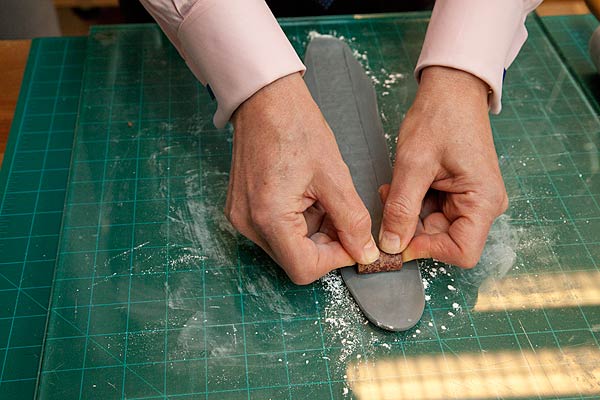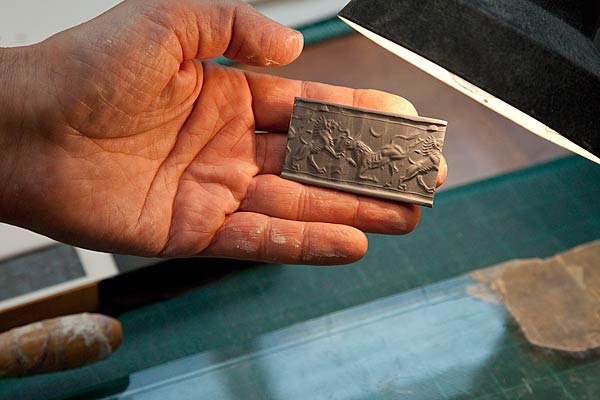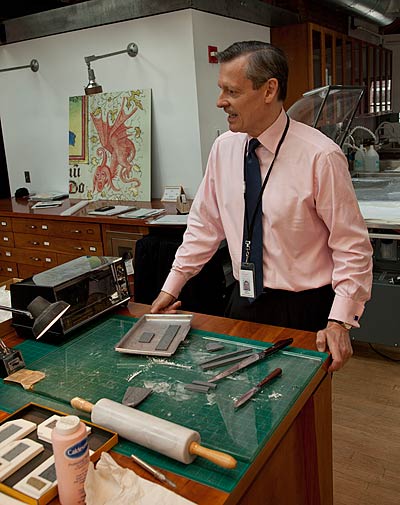August 10, 2010
"It is the chief project, as I understand it, of Mr. Morgan in bringing to this country the written and figured monuments of the early East, such as tablets, seal cylinders, bas-reliefs, or statues, to put within reach of American scholars the material necessary for adding to the knowledge of the world." William Hayes Ward (American scholar 1835–1916)
Collecting Seals and Tablets
William Hayes Ward was the first American scholar to realize the importance of cylinder seals to Western Asian archaeology. Between around 1885 and 1908 he amassed, probably on Morgan's behalf, a collection of 1,157 Western Asian seals, which form the core of the Morgan's internationally renowned collection. In addition to seals from the ancient Western Asia, Morgan collected almost 3,000 cuneiform tablets, the majority of which are housed at Yale University.
Seals: A Background
Carved for about 3,000 years in the region the ancient Greeks called Mesopotamia, cylinder seals first appeared in the latter half of the fourth millennium B.C. The Morgan's collection is among the best and most extensive in the world.
Generally only an inch in height, the seals were carved in great detail with simple tools on semiprecious stones. No two were alike; each seal had an owner and served as identification as well as an amulet to protect the owner and bring good luck. Seals were engraved with scenes and designs that appear in relief when they were rolled over clay. The impressed clay dried and hardened into a seal for doors, jars, boxes, and baskets. The principal function of the cylinder seal in later times was to impress clay tablets on which records were inscribed in order to authenticate a document.
The North Room: A New Opportunity to Display Seals and Migration Era Objects
During the interior restoration of J. Pierpont Morgan’s Library, the North Room of the building will be converted into a gallery designed to show a wide selection of Morgan's collection of antiquities, featuring ancient Western Asian seals and tablets, Greek and Roman objects acquired by Morgan, and the Thaw Collection of what are called "Migration Era" objects. The small-scale, delicately carved seals will be shown next to impressions rolled out in gray plasticine as well as blown-up photographs of the impressions that reveal the wealth of detail on these exquisitely carved stones. A challenge to the mounters will be four ancient Western Asian clay tablets also to be displayed. They are extremely fragile objects containing text written in cuneiform, including the earliest known flood narrative.
The Thaw Collection of objects created in Europe, Central Asia, and the Middle East between 300 and 1,000 A.D.—the Migration Era—will be shown in its entirety for the first time. These jeweled pieces are similar to those collected by Morgan himself and provide a link between antiquity and the early medieval world. In order to safely and attractively display these works—mostly made of gold or silver and including semi-precious stones—a professional mount maker will carefully pin each object to a panel making sure it is fully supported for vertical display. The panel will then be put in the case which will be lighted from above and both sides in order to allow viewers to see the intricate craftsmanship in these works.
Morgan's Interest Beyond Ancient Western Asia
Morgan extended his interest in non-western art and culture well beyond the ancient Western Asia. In 1871 he took his family to Egypt. In 1906, with Morgan's financial aid and direction, the Metropolitan Museum of Art sent a team of archaeologists to excavate sites along the Nile River. Morgan made frequent trips to the dig, always referring to the place as his "beloved Egypt."
Sidney Babcock, Jeannette and Jonathan Rosen Curator and Department Head of Seal and Tablets, demonstrates how to make an impression of a Western Asian cylinder seal, the same way it was done in ancient times.












